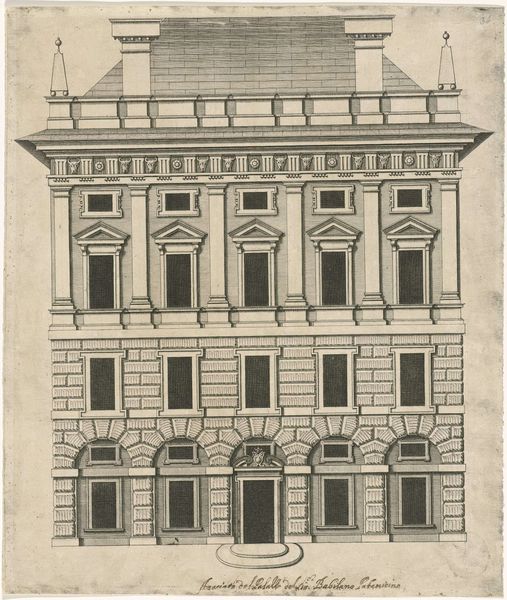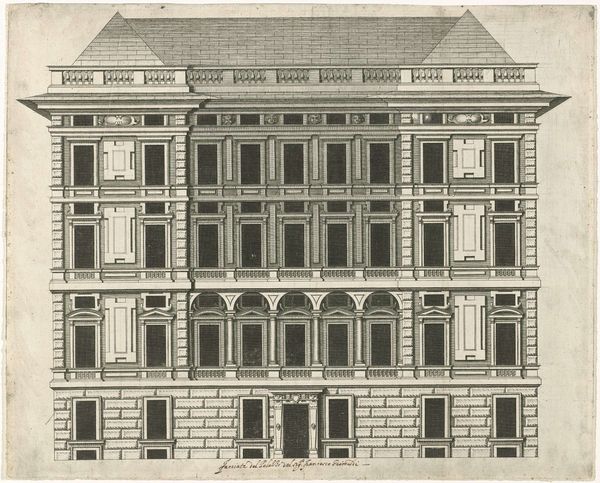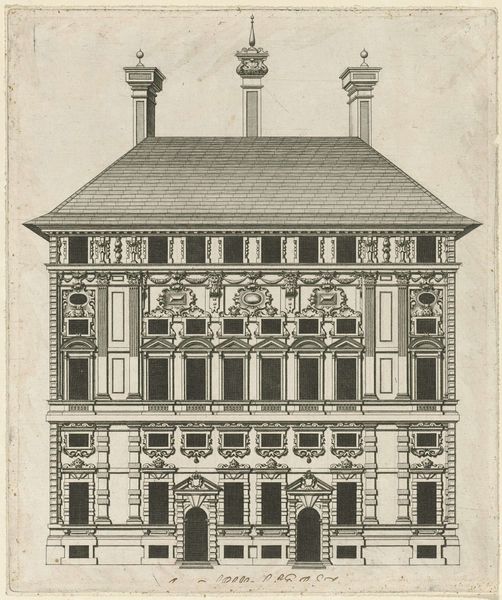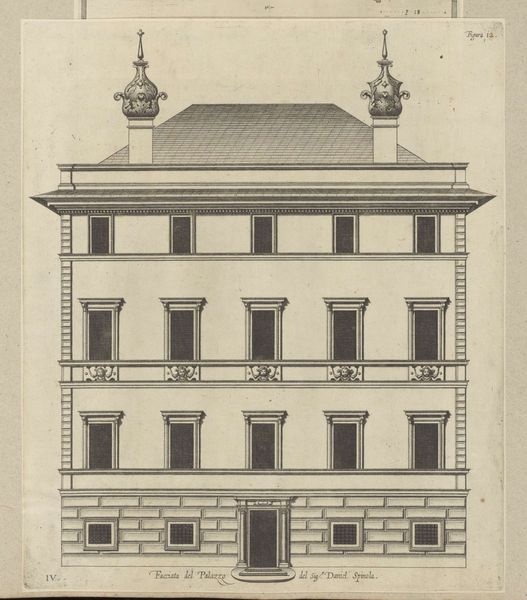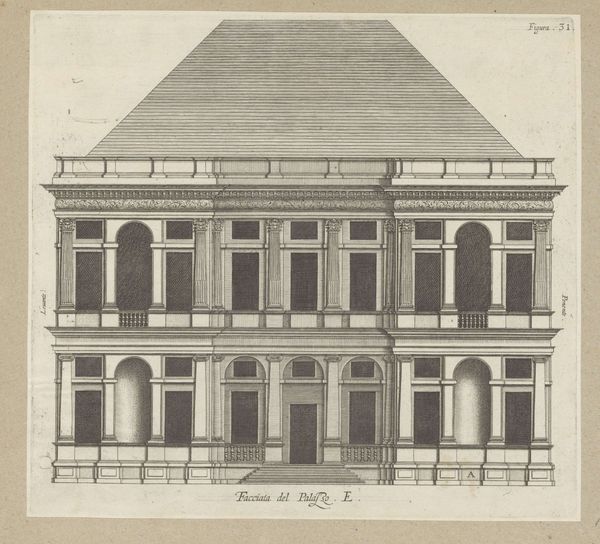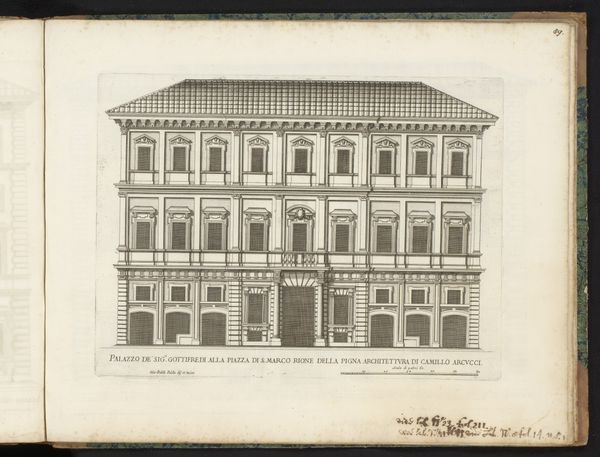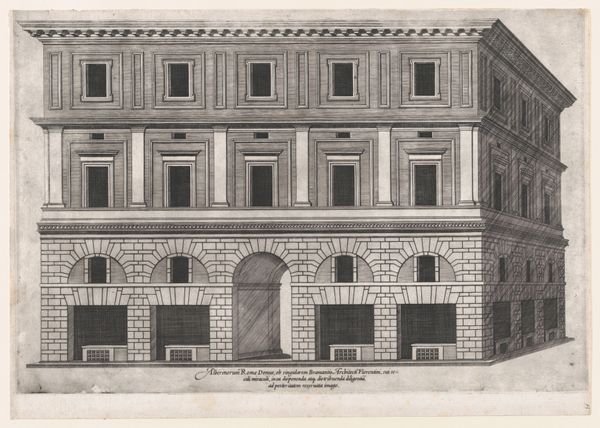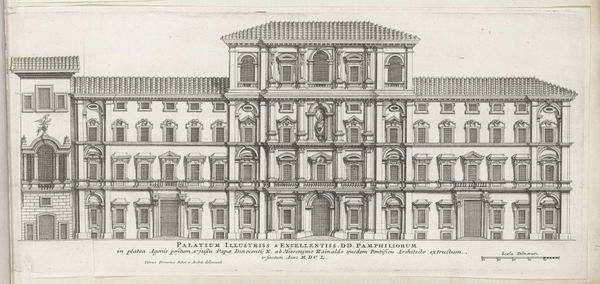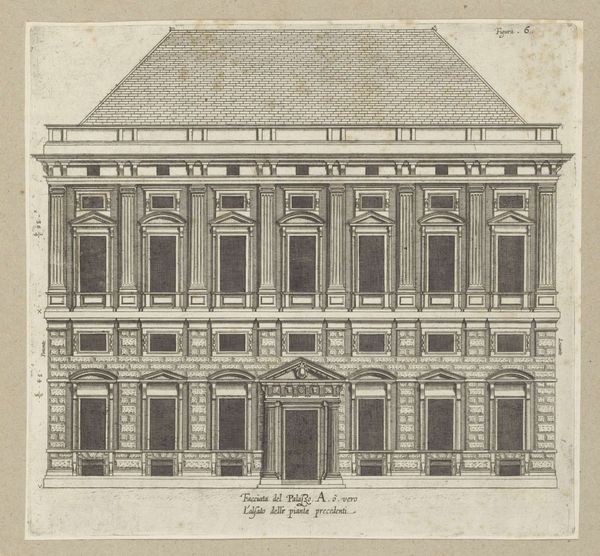
print, engraving, architecture
# print
#
old engraving style
#
geometric
#
line
#
italian-renaissance
#
engraving
#
architecture
#
building
Dimensions: height 352 mm, width 381 mm
Copyright: Rijks Museum: Open Domain
Editor: This is *Palazzo Di Negro*, an engraving from 1622 by Nicolaes Ryckmans, held at the Rijksmuseum. The precision is striking, but it also feels quite formal and reserved. What strikes you about it? Curator: Its precise depiction reminds us that prints like this served a vital function in disseminating architectural styles and ideals during the Renaissance. Consider the political and social context: powerful families like the Di Negro used architecture to project wealth, taste, and their connections to classical authority. Do you notice how the engraving flattens the space, emphasizing the facade’s geometric order? Editor: Yes, it’s almost like an architectural blueprint rather than a picturesque view. Were these prints circulated among architects and builders, almost like manuals? Curator: Exactly! They helped standardize architectural vocabulary across regions, facilitating the spread of Italian Renaissance ideas. Furthermore, the act of representing the Palazzo through print made it accessible, transforming a private monument into a public statement of cultural ambition. What do you think the repetitive elements – the windows, the arches – communicate? Editor: A sense of power and control, perhaps? Like, ‘we can afford this level of consistency and order.’ But also, maybe the print flattens and standardizes experience and appreciation by limiting personal or political expressivity. Curator: Precisely. The print transforms the building into an emblem, shaped as much by political aspiration as aesthetic innovation. Consider how these printed images influenced urban development and the performance of power. Editor: It’s interesting how a seemingly straightforward architectural image is loaded with so much cultural and political meaning. Thanks, this has made me see the print and the palazzo very differently! Curator: It's all about understanding the layers of context that shaped both its creation and reception. A valuable lesson indeed.
Comments
No comments
Be the first to comment and join the conversation on the ultimate creative platform.
